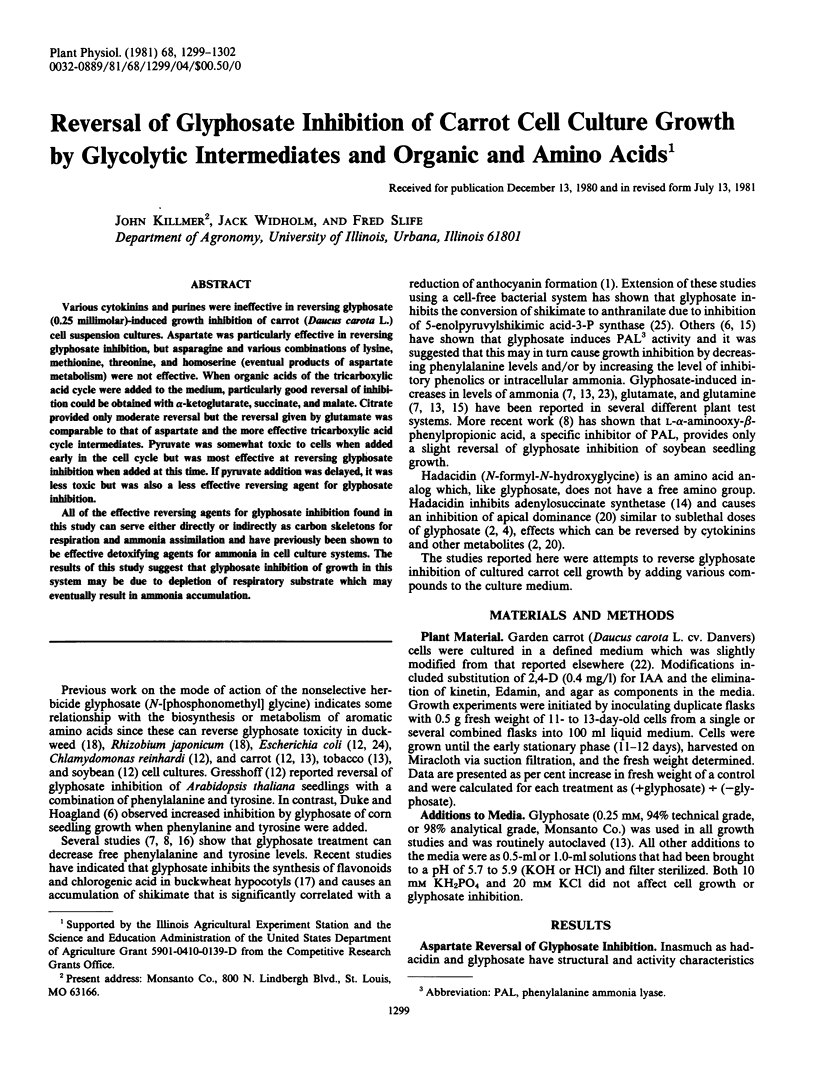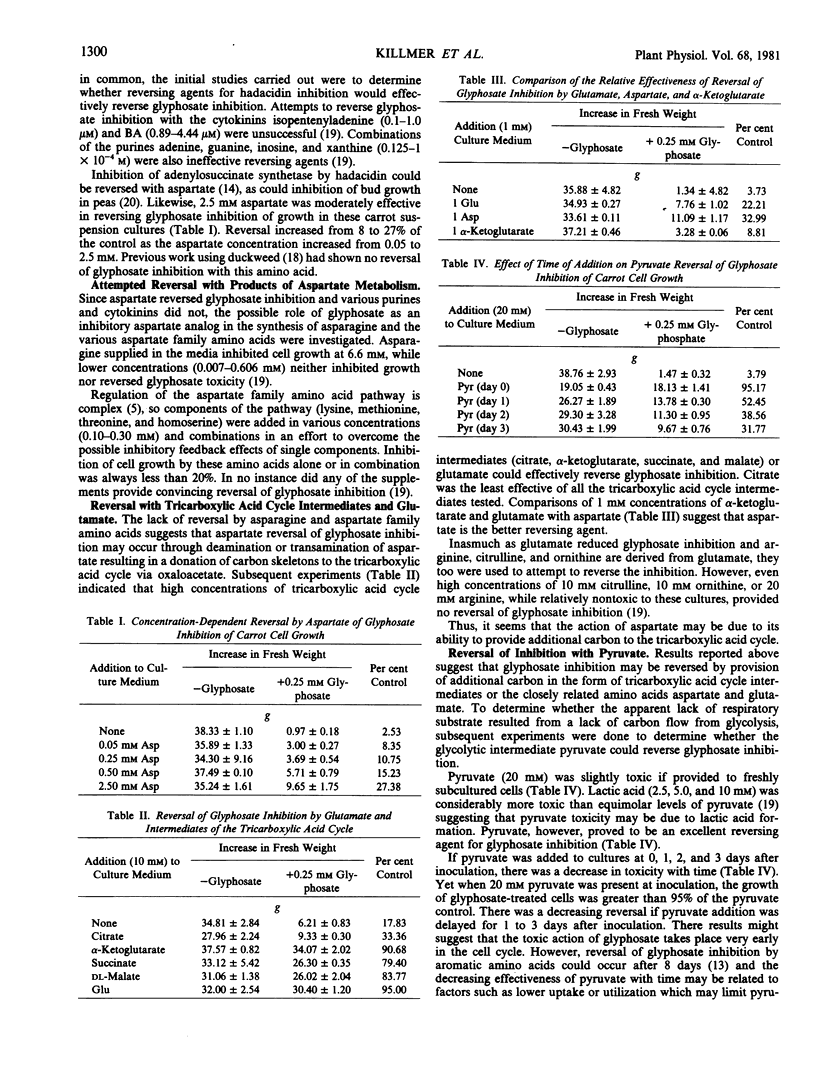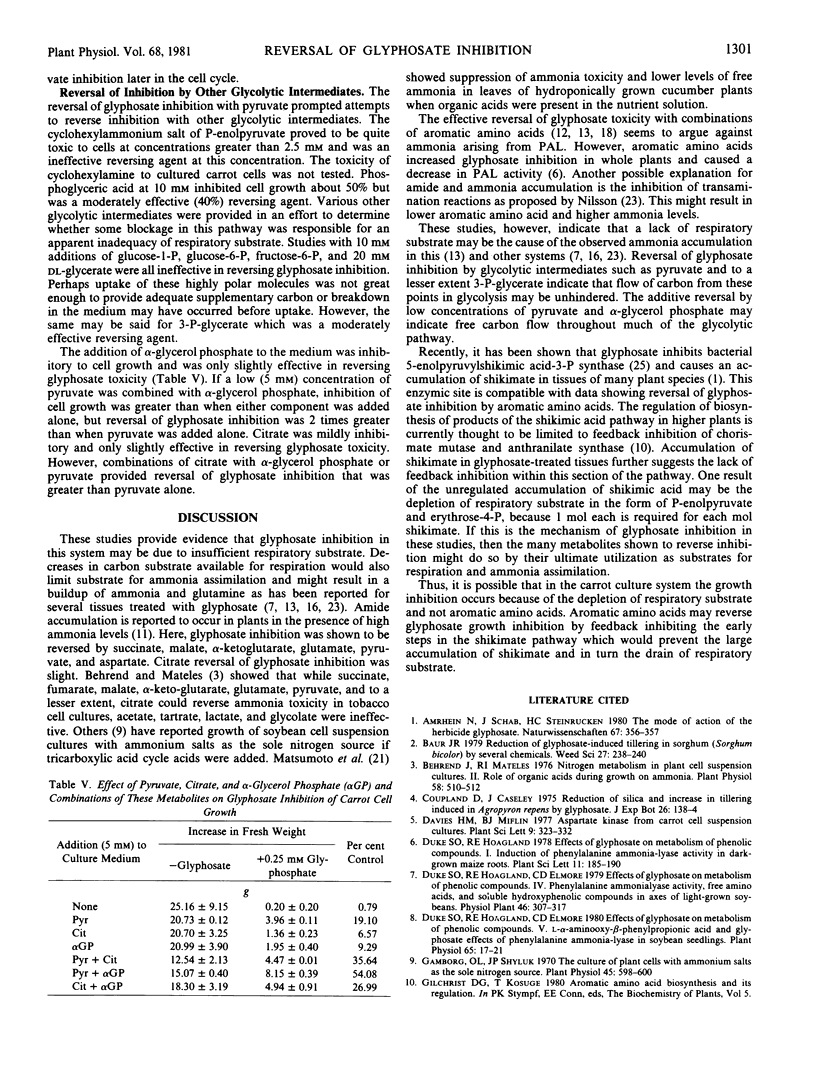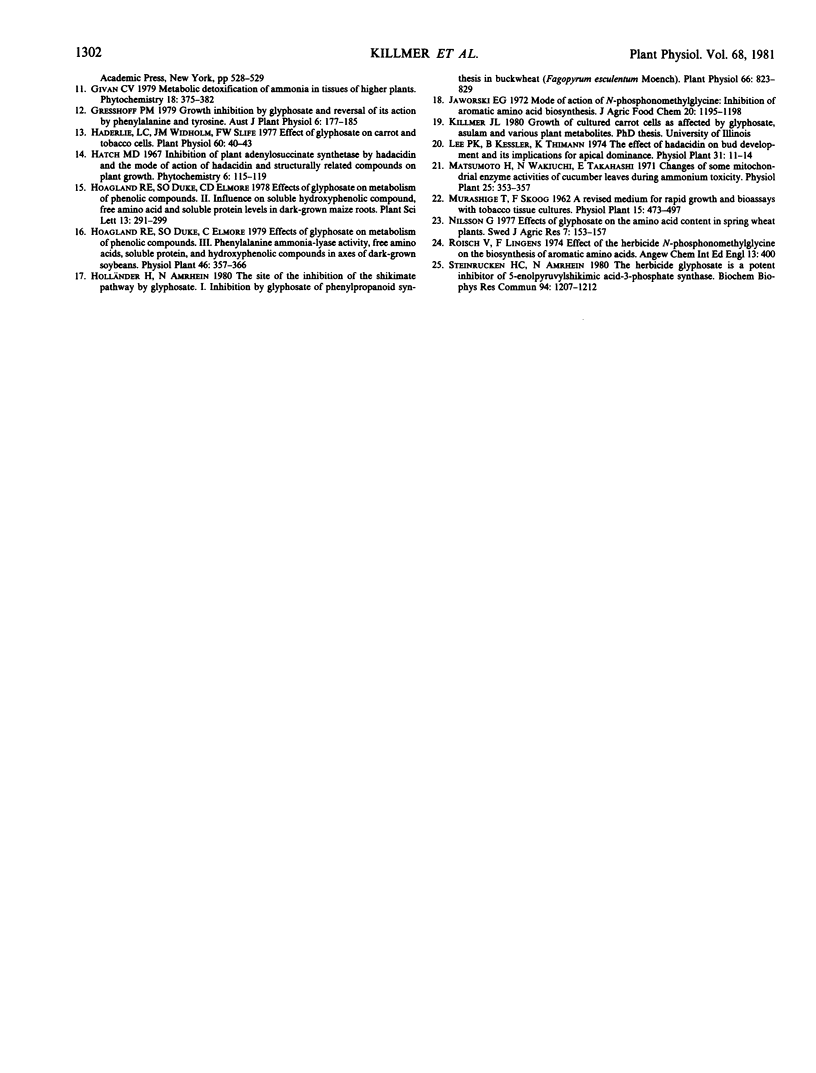Abstract
Various cytokinins and purines were ineffective in reversing glyphosate (0.25 millimolar)-induced growth inhibition of carrot (Daucus carota L.) cell suspension cultures. Aspartate was particularly effective in reversing glyphosate inhibition, but asparagine and various combinations of lysine, methionine, threonine, and homoserine (eventual products of aspartate metabolism) were not effective. When organic acids of the tricarboxylic acid cycle were added to the medium, particularly good reversal of inhibition could be obtained with α-ketoglutarate, succinate, and malate. Citrate provided only moderate reversal but the reversal given by glutamate was comparable to that of aspartate and the more effective tricarboxylic acid cycle intermediates. Pyruvate was somewhat toxic to cells when added early in the cell cycle but was most effective at reversing glyphosate inhibition when added at this time. If pyruvate addition was delayed, it was less toxic but was also a less effective reversing agent for glyphosate inhibition.
All of the effective reversing agents for glyphosate inhibition found in this study can serve either directly or indirectly as carbon skeletons for respiration and ammonia assimilation and have previously been shown to be effective detoxifying agents for ammonia in cell culture systems. The results of this study suggest that glyphosate inhibition of growth in this system may be due to depletion of respiratory substrate which may eventually result in ammonia accumulation.
Full text
PDF



Selected References
These references are in PubMed. This may not be the complete list of references from this article.
- Baur G. M., Porter J. M., Fletcher W. S. Human umbilical cord vein allograft arteriovenous fistula for chemotherapy access. Am J Surg. 1979 Aug;138(2):238–240. doi: 10.1016/0002-9610(79)90377-5. [DOI] [PubMed] [Google Scholar]
- Behrend J., Mateles R. I. Nitrogen Metabolism in Plant Cell Suspension Cultures: II. Role of Organic Acids during Growth on Ammonia. Plant Physiol. 1976 Oct;58(4):510–512. doi: 10.1104/pp.58.4.510. [DOI] [PMC free article] [PubMed] [Google Scholar]
- Duke S. O., Hoagland R. E., Elmore C. D. Effects of Glyphosate on Metabolism of Phenolic Compounds: V. l-alpha-AMINOOXY-beta-PHENYLPROPIONIC ACID AND GLYPHOSATE EFFECTS ON PHENYLALANINE AMMONIA-LYASE IN SOYBEAN SEEDLINGS. Plant Physiol. 1980 Jan;65(1):17–21. doi: 10.1104/pp.65.1.17. [DOI] [PMC free article] [PubMed] [Google Scholar]
- Gamborg O. L., Shyluk J. P. The culture of plant cells with ammonium salts as the sole nitrogen source. Plant Physiol. 1970 May;45(5):598–600. doi: 10.1104/pp.45.5.598. [DOI] [PMC free article] [PubMed] [Google Scholar]
- Haderlie L. C., Widholm J. M., Slife F. W. Effect of glyphosate on carrot and tobacco cells. Plant Physiol. 1977 Jul;60(1):40–43. doi: 10.1104/pp.60.1.40. [DOI] [PMC free article] [PubMed] [Google Scholar]
- Holländer H., Amrhein N. The Site of the Inhibition of the Shikimate Pathway by Glyphosate: I. INHIBITION BY GLYPHOSATE OF PHENYLPROPANOID SYNTHESIS IN BUCKWHEAT (FAGOPYRUM ESCULENTUM MOENCH) . Plant Physiol. 1980 Nov;66(5):823–829. doi: 10.1104/pp.66.5.823. [DOI] [PMC free article] [PubMed] [Google Scholar]
- Roisch U., Lingens F. Effect of the herbicide N-phosphonomethylglycine on the biosynthesis of aromatic amino acids. Angew Chem Int Ed Engl. 1974 Jun;13(6):400–400. doi: 10.1002/anie.197404001. [DOI] [PubMed] [Google Scholar]
- Steinrücken H. C., Amrhein N. The herbicide glyphosate is a potent inhibitor of 5-enolpyruvyl-shikimic acid-3-phosphate synthase. Biochem Biophys Res Commun. 1980 Jun 30;94(4):1207–1212. doi: 10.1016/0006-291x(80)90547-1. [DOI] [PubMed] [Google Scholar]


